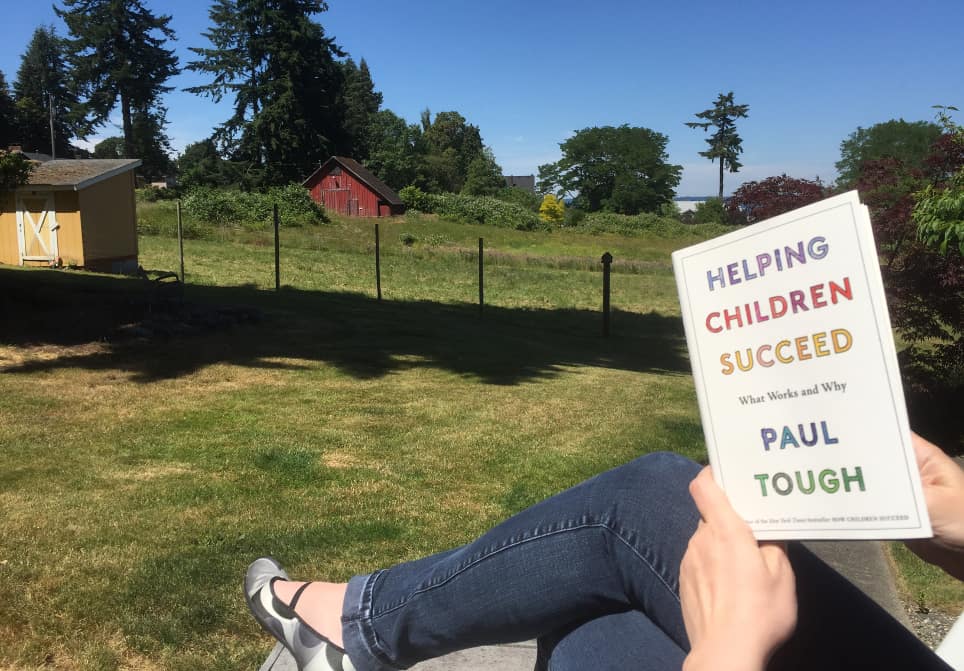How Deeper Learning Helps Children Succeed

By Paul Tough
The pedagogical techniques that prevail at EL schools and that Turnaround’s instructional coaches emphasize in their work are connected to a larger trend in education today, known colloquially as deeper learning.
This relatively new movement, which is also sometimes called student-centered learning, has its roots in the progressive strain of American educational thought, but its current incarnation is also based on the modern belief, common among corporate executives and other business leaders, that there is a major and potentially calamitous disconnect brewing between the historical structures and traditions of the American public school system and the labor-force demands of the 21st-century American economy. When most of our current pedagogical practices were developed more than a century ago, the essential economic purpose of public schools was to produce industrial workers who were fast and reliable when assigned repetitive mechanical or clerical tasks.
In this century, deeper-learning proponents argue, the job market requires a very different set of skills, one that our current educational system is not configured to help students develop: the ability to work in teams, to present ideas to a group, to write effectively, to think deeply and analytically about problems, to take information and techniques learned in one context and adapt them to a new and unfamiliar problem or situation. In order to develop those skills, advocates say, students need opportunities to practice them in school. And right now, in most schools, they don’t get those opportunities.
And so deeper-learning proponents promote inquiry-based instruction, which means that in the classroom, teachers tend to engage students in discussions rather than just lecturing to them; project-based learning, in which students spend much of their time working, often in groups, on elaborate projects that might take weeks or months to complete; and performance-based assessments, in which students are judged not primarily by their scores on end-of-semester exams, but by the portfolios, presentations, artwork, and written work they produce throughout the year.
At many schools run on deeper-learning principles, there is an ethos that celebrates peer critique, revision, and tinkering; student work often goes through many drafts over the course of the school year, based on feedback from teachers and classmates. One of the fundamental beliefs of deeper-learning advocates is that these practices—revising work over and over, with frequent critiques; persisting at long-term projects; dealing with the frustrations of hands-on experimentation—develop not just students’ content knowledge and intellectual ability, but their non-cognitive capacities as well: what Camille Farrington would call academic perseverance and what others might call grit or resilience.
There are plenty of deeper-learning skeptics out there, and one of their chief concerns is that while project-based learning in the hands of a well-trained educator can be used in the classroom in a highly effective way, it is also a technique that is easy for an unprepared teacher to do quite badly. In order to be worthwhile, student projects need to be rigorously planned, carefully supported, and built on a foundation of accurate and relevant information. When that doesn’t happen, project-based learning can become the empty calories of education: a collection of engaging distractions that are unrelated to the larger goal of increasing students’ knowledge.
Still, perhaps the most significant shortcoming of the deeper-learning movement today is that you are much more likely to find these ideas in use if you visit a school in a well-off neighborhood than if you visit a school in a poor one. In 2014, Jal Mehta, a professor at the Harvard Graduate School of Education, wrote a provocative essay, published online by Education Week, titled “Deeper Learning Has a Race Problem.” In it he identified some worrisome issues not only of race but of class.
“Deeper learning has historically been the province of the advantaged —those who could afford to send their children to the best private schools and to live in the most desirable school districts,” Mehta wrote. “Research on both inequality across schools and tracking within schools has suggested that students in more affluent schools and top tracks are given the kind of problem-solving education that befits the future managerial class, whereas students in lower tracks and higher-poverty schools are given the kind of rule-following tasks that mirror much of factory and other working-class work.
Mehta acknowledged in his essay that some of this inequity is on the supply side: Schools that have the freedom and resources to adopt the techniques of deeper learning are more likely to be well-funded independent schools or public schools in wealthy suburbs or neighborhoods. But a significant part of the divide, he wrote, is on the demand side. Many of those who are most committed to the education of low-income and minority students—including many of the parents of those students—are skeptical that deeper-learning methods are the best ones for disadvantaged students.
Those skeptics (and others) point out that in the 1960s and 1970s, “project-based learning” was used in some low-income schools as a euphemism for the practice of having poor kids build Lego models and doodle in coloring books while the rich kids across town learned how to read and do math. They also express concern that students without the deep and broad background knowledge and fluency that affluent children generally absorb from their homes and communities first need to develop that core knowledge before they can benefit from a collaborative, project-based approach.
Bob Lenz is the co-founder of the Envision Education network of charters, which has made project-based learning the central pedagogical strategy in its three schools in the San Francisco Bay Area, all of which serve mostly low-income black and Latino students. In his 2015 book Transforming Schools, Lenz addressed the class concerns that many people have about the deeper-learning approach. “We do encounter skeptics when we describe what we do,” he wrote. “Project-based learning is a luxury, people will say, for the well-resourced and well-prepared upper-middle class, but kids on the wrong side of the achievement gap can’t afford to waste time on projects when there is so much work to do in shoring up their basic skills.” Lenz disagrees. “We have yet to encounter a single student who was either not ready or somehow too advanced for the kind of performance- and project-based education that we advocate,” he wrote.
There is a growing body of empirical evidence that suggests that Lenz is right: deeper-learning methods, when employed well, do actually produce measurable benefits for students in poverty. As I mentioned above, Expeditionary Learning schools have shown significant academic success with low-income students. Graduates of Envision schools are persisting in college at high rates (though the schools are new enough that that data is still preliminary). And a 2014 study of student performance at schools in California and New York, conducted by the American Institutes for Research, found that attending deeper-learning schools had a significant positive impact, on average, on students’ content knowledge and standardized-test scores. (Three-fifths of the students in the study were low-income, and their scores improved just as much as the scores of the students who were above the low-income cutoff.)
Deeper-learning strategies are often presented as a corrective to the no-excuses philosophy of education associated with some of the earliest and best-known charter-school networks, including KIPP, Uncommon Schools, and Achievement First. In their early years, especially, those schools, which serve mostly low-income students and often achieve standardized-test scores that are far above average for such students, emphasized strict behavior codes, requiring students to comply with a rigorous set of rules about how to dress and how to sit in the classroom and how to walk through the hallways. At many of those schools, elaborate systems of incentives and punishments were (and often still are) a central part of the strategy for managing and motivating students.
But more recently, the sharp dividing lines that once existed between no-excuses and deeper-learning schools have begun to blur. In the fall of 2015, Elm City Preparatory Elementary School in New Haven, Connecticut, one of the founding schools of the Achievement First network, introduced a wholesale redesign of its curriculum that includes an embrace of many of the beliefs and practices of deeper learning, including an increased emphasis on experiential learning and student autonomy.
Students at Elm City (86 percent of whom qualify for free or reduced-price lunch) now control their schedule and follow their own personal interests in their learning much more than they used to, and they have more autonomy in the subjects they study, including daily “enrichment” courses in robotics, dance, and tae kwon do. Once every two months, Elm City teachers lead students on a two-week “expeditionary” project in which they deeply study a single subject, sometimes involving extensive time outside school visiting a farm, museum, or historical site.
When I spoke in December 2015 to Dacia Toll, the co-CEO and co-founder of Achievement First, she said the Elm City experiment, which had been under way for only a few months, had taken some getting used to by teachers and administrators. She and her redesign team had been heavily influenced by the motivation research of Deci and Ryan, which, you’ll recall, emphasized three crucial intrinsic motivators: autonomy, competence, and relatedness.
“The hardest one for us at Achievement First has always been autonomy,” Toll said. “In the past, we’ve had a tendency to think we know what’s best for students. So letting kids choose what to focus on has been a bit of a challenge for us.” So far, though, she said, the experiment had been a success. Students were still getting the rigorous education that Elm City had become known for, but now they were more motivated, more enthusiastic, and more engaged.
Excerpted from HELPING CHILDREN SUCCEED: What Works and Why by Paul Tough. Copyright © 2016 by Paul Tough. Reprinted by permission of Houghton Mifflin Harcourt Publishing Company. All rights reserved.
This blog is part of “It’s a Project-Based World” series. To learn more and contribute a guest post for the series, see the Project-Based World page. Join in the conversation at #projectbased.
For more, see:
- Getting Smart Podcast: Paul Tough on Helping Children Succeed
- Schools for Wisdom: Personalized Project-Based Learning
- Project-Based Learning Models the Work World
Stay in-the-know with all things EdTech and innovations in learning by signing up to receive the weekly Smart Update. This post includes mentions of a Getting Smart partner. For a full list of partners, affiliate organizations and all other disclosures please see our Partner page.





0 Comments
Leave a Comment
Your email address will not be published. All fields are required.